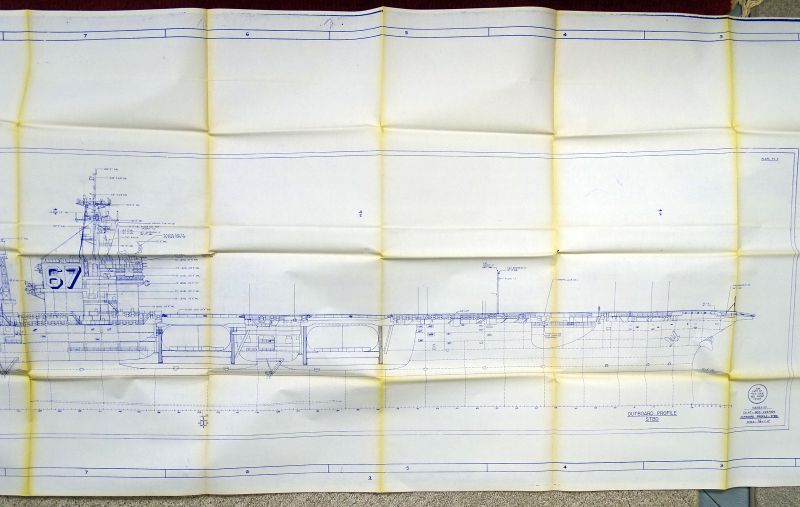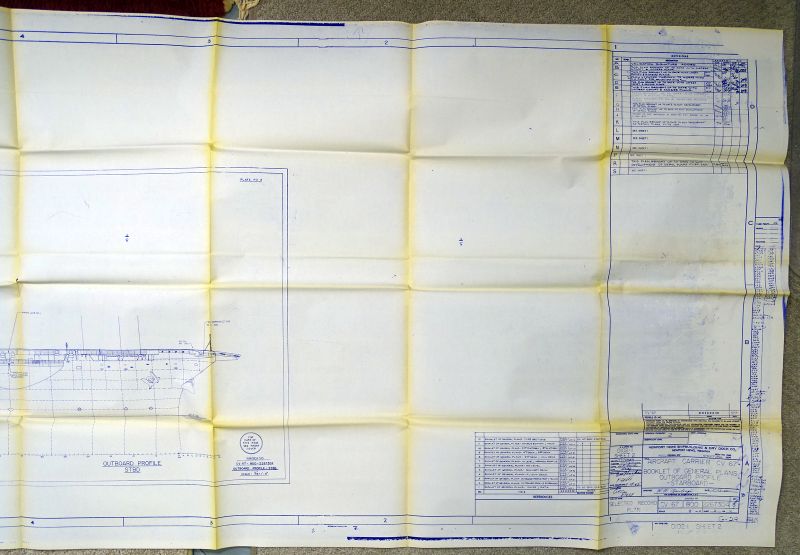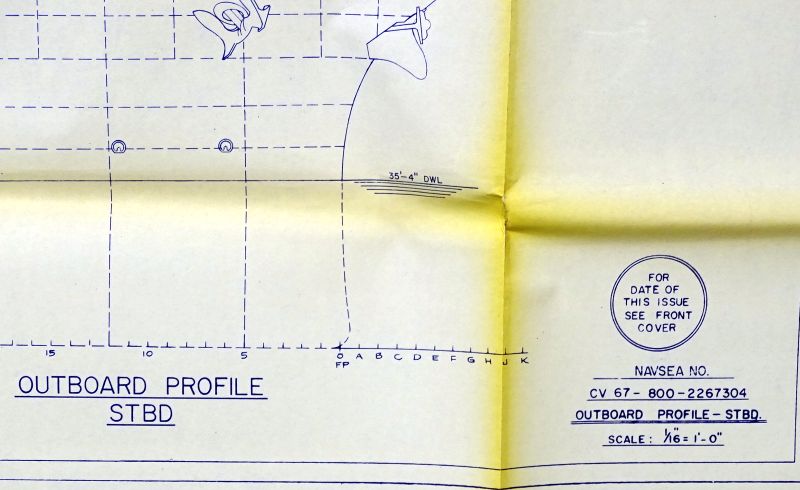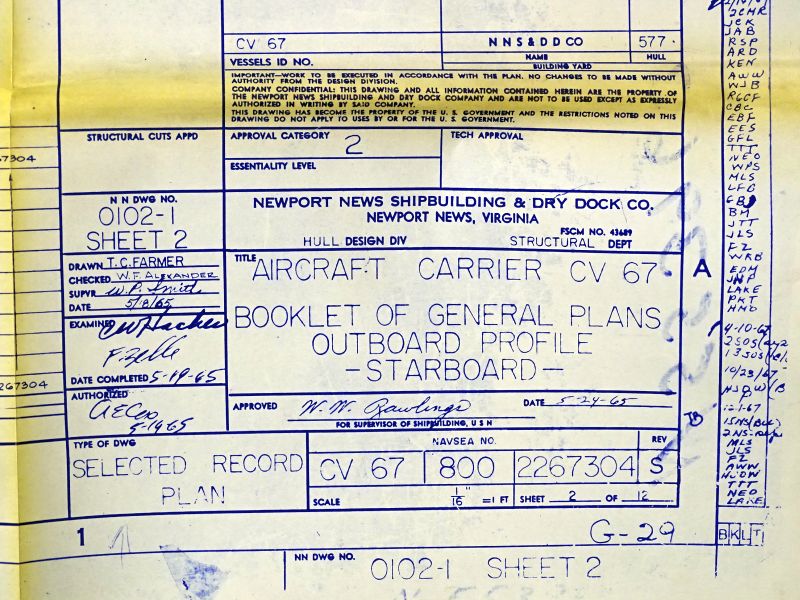Large Blueprint of the Aircraft Carrier USS John F. Kennedy CV-67
$95.00
The blueprint measures approximately 30 inches wide by 107 inches long, or approximately 2-1/2 feet wide by 9 feet long. The blueprint bears the original drawing date of 1965, with dated revisions into 1989. The blueprint shows fold lines and fold creases, with yellow discoloration on the fold lines.
USS John F. Kennedy (CV-67) (formerly CVA-67) is the only ship of her class (a variant of the Kitty Hawk class of aircraft carrier) and the last conventionally powered carrier built for the United States Navy. The ship was named after the 35th President of the United States, John F. Kennedy, and was nicknamed “Big John”. John F. Kennedy was originally designated a CVA (fixed wing attack carrier); however, the designation was changed to CV.
After nearly 40 years of service in the United States Navy, John F. Kennedy was officially decommissioned on 1 August 2007. She is berthed at the NAVSEA Inactive Ships On-site Maintenance facility in Philadelphia, formerly the Philadelphia Naval Shipyard, and, until late 2017, was available for donation as a museum and memorial to a qualified organization. In late 2017, the Navy revoked her “donation hold” status and designated her for dismantling. The name has been adopted by the future Gerald R. Ford-class aircraft carrier John F. Kennedy (CVN-79). In August 1988 John F. Kennedy departed on her twelfth overseas deployment. During this deployment, a pair of MiG-23 Flogger fighter aircraft from Libya approached the carrier task force, which was 81 miles (130 km) off the shore of Libya near the declared Libyan territorial waters of the Gulf of Sidra. John F. Kennedy launched two F-14 Tomcats from VF-32 “Fighting Swordsmen” to intercept the incoming MiGs. The U.S. planes were sent to escort the MiGs away from the task force. During the course of the intercept, the MiGs were determined to be hostile and were both shot down.







